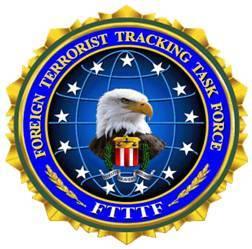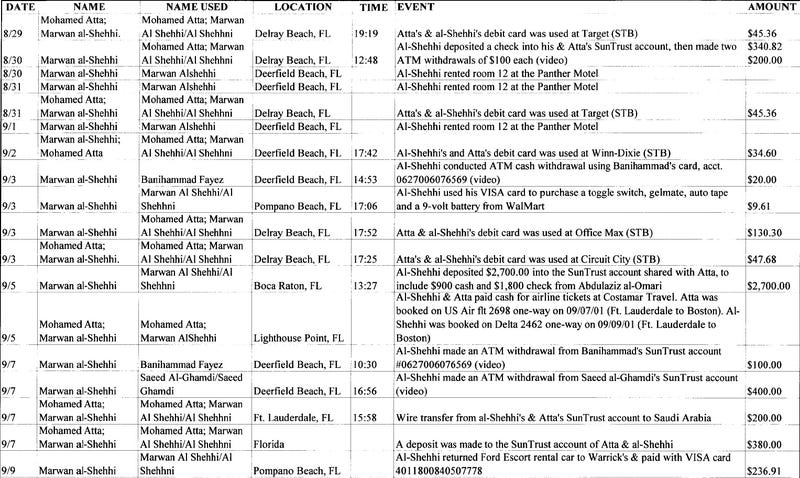The National Security Agency (NSA) may have been forced to take a stutter step in its surveillance program (or resort to methods not made public) earlier this week regarding the collecton of metadata under the PATRIOT Act, but there is another agency that is more secretive, more invasive, and has more information on you than could be gathered from your metadata.
If you have a telephone number that has ever been called by an inmate in a federal prison, registered a change of address with the Postal Service, rented a car from Avis, used a corporate or Sears credit card, applied for nonprofit status with the IRS, or obtained non-driver’s legal identification from a private company, they have you on file.
The agency is the National Security Analysis Center (NSAC), a shadow branch of the U.S. Justice Department that employees over 400 people (including nearly 300 analysts) and boasts an annual budget of over $150 million.
As with so many other departments designed to seize our liberty and exchange it for “safety” from “terrorists,” the NSAC was created in the wake of the attacks of September 11, 2001 and was tasked with identifying any other similar threats that may have sneaked into the United States with similar purposes.
Post-9/11, however, the bureau’s mission shifted to include scanning the country for “domestic terrorists,” too. Phase Zero reports:
NSAC was created to focus scrutiny on new threat, specifically on Americans, particularly Muslims, who might pose a hidden threat (the [Foreign Terrorist Tracking] Task Force became a unit within NSAC’s bureaucratic umbrella). As Americans began traveling abroad to join al-Shabaab and then ISIS, the Center’s dragnet expanded to catch the vast pool of “youth” who also might fit a profile of either radicalism or law-breaking. Its mission runs the full gamut of “national security threats...to the United States and its interests,” according to a partially declassified Justice Department Inspector General report. That includes everything from terrorism to counter-narcotics, nuclear proliferation, and espionage.
How is the mission accomplished? Phase Zero reports that “in partnership with the military,” the NSAC conducts:
deep background investigations of foreign-born and foreign-connected soldiers, civilians, and contractors working for the government. Its investigations go far beyond traditional security “vetting”; NSAC scours certain select government employees, contractors and their affiliates, examining multiple layers of connected relatives and associates. And the Center hosts dozens of additional “liaison” officers from other government agencies, providing those agencies with frictionless access to private information about U.S. residents that they would otherwise not have.
Using access to databases of information available only to its analysts, the NSAC drills deep into the Internet to collect and collate data on anyone who happens to fit a profile programmed into its surveillance software. In other words: data mining. Phase Zero lays out the when and how of the program:
Homeland Security Presidential Directive-2 (HSPD-2), signed by George W. Bush in October 2001, established FTTTF and directed it to use “advanced data mining software” to find and prevent “aliens who engage in or support terrorist activity” from entering the United States. Though data mining was at the center of its mission, other agencies—particularly the Defense Advanced Projects Research Agency (DARPA) and the Pentagon’s Counterintelligence Field Activity (CIFA)—funded the development of many of the techniques.
And:
The American people have repeatedly rejected the notion of a domestic intelligence agency operating within our borders. Yet NSAC has become the real-world equivalent. Along the way in its development though, the Center has rarely been discussed in the federal budget or in congressional oversight hearings available to the public. And being neither solely a part of the intelligence community (IC) nor solely a law enforcement agency (and yet both), it skirts limitations that exist in each community, allowing it to collect and examine information on people who are not otherwise accused of or suspected of any crime.
Thus making every American a suspect and turning the Constitution into nothing more than the easily pierced parchment barrier that the Founders feared it would become in the custody of the corrupt.
Due process is the bane of this type of data mining and despite the recent rapid growth of the latter, the former has been a reliable protection against despotism for nearly a millennium.
Turning its focus away from potential overseas dangers to those growing in its own backyard, as part of Project Scarecrow, the NSAC began monitoring those affiliated with the so-called “sovereign citizen” movement and others it deemed “domestic threats.”
The scope of the surveillance extended beyond Americans, however. NSAC, in partnership with police, "batch-matched dates of birth with licensed drivers to isolate a set of Pakistani men thought to be potentially connected to a terrorist group. The identities of foreign-born or connected hazardous materials (HAZMAT) drivers in the U.S. were added to a group of 'special interest individuals' constantly run against suspect datasets."
Phase Zero obtained a cache of incriminating documents that revealed that the NSAC and the Task Force uses "data from many divergent public, government and international sources for the purpose of monitoring the electronic footprints of terrorists and their supporters, identifying their behaviors, and providing actionable intelligence to appropriate law enforcement, government agencies, and the intelligence community."
Constitutionalists should catch several problematic phrases in that ostensibly “patriotic” purpose.
First, what is a terrorist? Isn’t a terrorist a person convicted of committing terror, the same as a murderer is a person convicted of murder? Not in the United States of 2015.
Since the signing of the National Defense Authorization Act of 2012 (NDAA), the United States has become a battlefield and every American is a potential “covered person,” meaning a person covered by the provisions of that act that would permit the president to apprehend (kidnap, in less euphemistic language) anyone he alone suspects of having some sort of association with terrorists.
That brings us to the second problem: What does the NSAC mean when it targets those suspected of beings “supporters” of terrorists?
Fearing that this type of language potentially could be applied to journalists and that the specter of such a scenario would have a chilling effect on free speech and freedom of the press in violation of the First Amendment, award-winning journalist Chris Hedges filed a lawsuit on January 12, 2012 challenging the constitutionality of the NDAA.
Hedges claims that his extensive work overseas, particularly in the Middle East, could qualify him as a “covered person” who, by way of such writings, interviews and/or communications, had “substantially supported” or “directly supported” “al-Qaeda, the Taliban or associated forces.
Similar concerns exist in the equally vague language of the NSAC’s internal memo published by Phase Zero. It is nearly indisputable in the contemporary climate of near-constant surveillance that the NSAC would use its terrorist tracking mandate to gather and store personal information on millions of Americans who’ve done nothing remotely connected to anything that could be construed as a threat to national security.
Thanks to the Phase Zero report it is now known that, regarding the scope of the surveillance:
An average of 6,000 target packages a month are prepared by the Center, many resulting in leads to law enforcement authorities, but the majority just human metadata living in perpetual link analysis limbo. The volume of data open to Center, and the complex queries made have resulted in the Task Force building four unique software systems to manage analyst access and data management.
Tax money is being taken from Americans and used to build the walls of the Panopticon higher and higher, making each of us a prisoner within walls we work to pay for.
So, while the NSA servers are temporarily shut down, the computers at the super-secret NSAC continue monitoring and mining personal data of millions of unsuspecting Americans.







No comments:
Post a Comment